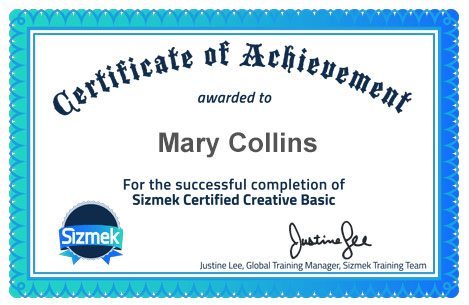Display Advertising and Creative Tools
I’ve written before about our capabilities in display advertising (and sung my own praises in that respect), so I thought it was high time I put my money where my mouth is and showed you some examples of what we can do with your campaigns online.
I use many tools here to create display ads, the chosen one is dictated by the particular campaign. The Media Agency will often request formats to be built for certain platforms, i.e. Double-click, Sizmek, Celtra etc., which in turn will reflect the chosen tool. For standard banners, we have more freedom to choose how we build the ad, and we’ll choose the best tool based on the creative.
There are a range of HTML5 authoring tools available and they all have their pros and cons. Here, I’ll go through some of the tools that we commonly use. If you have an ad-blocker enabled, you won’t be able to see the examples below, so please disable any ad blockers temporarily to see what we can do!
1. Adobe Edge Animate CC
In 2011, Adobe announced the release of Edge Animate CC as a new authoring tool for HTML5 content that would replace Flash as it’s online animation tool. They’ve since taken a U-turn, and as of November 2015, Edge is no longer actively developed, in favour of Animate CC, (the new name for Flash). I’m still holding onto this app though. Why? It’s simple and clean.
The biggest advantage for me is the handling of images. Images are much more easily replaced and compressed in Adobe Edge than in Animate CC.
For banners with relatively simple animation, this is where I head to. Adobe Edge banners can be configured to work for Standard Banners and Double-click Rich Media display ads. Loading external libraries is simple, so added levels of complexity in animation and functionality can be achieved.
2. Adobe Animate CC
Animate CC — The snazzy new name for Flash. Flash has had the ability to export animations as HTML canvas packages for a while now, and Adobe are now really pushing Animate as an ad authoring tool for HTML5. Designers who are familiar with creating Flash banners can now also create HTML5 banners in almost exactly the same way as before.
Animate CC will generate a HTML file where your clickTag or Rich Media code can be inserted. Personally, I’ve set up Animate Templates, (I’ve done the same for Edge), so that I can quickly set up a banner and crack on. As anyone who works in Digital Advertising knows, time is one of the biggest enemies in production, so even small time-saving tips like this are a big help in the long run.
I’m turning to Animate CC more and more these days, particularly for jobs that require complex masking, which Edge can’t manage easily, or for a big suite of display ads that contain common vector elements, as making updates across a large suite is quicker in Animate than in Edge.
See an example here of a Homepage Takeover (HPTO) for RTE, built in Adobe Animate CC for the Double-click platform: Click here to view the sample HPTO.
3. Google Web Designer
GWD is Googles free HTML authoring tool. It’s free and is highly integrated with Double-click and DCM. In-built templates allow you to quickly set up standard and rich media display ads quickly, be they for desktop or mobile.
It’s not perfect though, the animation capabilities are quite basic, and you can’t copy/paste elements or animations between documents, In the words of Joni Mitchell: “something you don’t know you’ve got till it’s gone”. This particular restraint is frustrating when you’re creating a suite of banners from the same creative.
Being a Google Product though, you do get to take advantage of some nifty in-built components, such as image carousels, and Street View. See example below where you can swipe through a gallery, or view the studio on Street View.
My main issues with GWD is the interface. It’s clunky and can be a little buggy. It’s not as intuitive as the higher quality equivalents from Adobe, but then again it’s free, compared to the monthly charge of €50 +VAT for the Adobe Creative suite license you need to access Edge and Animate CC. However, although GWD has some nice in-built features, as a professional ad authoring tool, it’s just not there (yet).
4. Celtra Ad Builder
I have a lot of love for Celtra – and not just because they sent me a box of chocolates last Christmas. I believe advertisers aren’t utilising this ad creation platform enough or to it’s fullest extent, particularly for mobile display ads. Their AdCreator interface is great and easy to learn for beginners.
Support is impeccable also, and they’re always willing to help when we need to push the AdCreator outside of bounds for bespoke campaigns. Creative agency accounts are free to boot. What’s not to love?
Here’s a quick example using the “Wipeable” component.
Interestingly, Celtra have had this wipeable functionality available for a while now, while Double-click offers it in Beta mode, making it available only to Studio Certified developers.
Celtra makes insertion of image galleries, puzzles, store locators, maps, etc. a breeze, and is well worth considering for your next display ad campaign.
5. Sizmek Ad Builder
Sizmek has been in the game for as long as I can remember, and they have a lot to offer. While I feel that the interface could be streamlined, and the UI needs to be looked at for the platform, support is excellent, and they offer a wide range of formats to develop on.
Their HTML5 ad builder is good, and documentation is thorough. Here’s a quick Rich Expandable banner I created using their ad builder utilising the video and tweet components: Click here to view the demo.
I’ve just become Sizmek Certified in Creative Basic, which covers the basics of HTMl5 banners, rich media, video advertising (VPAID and VAST) and setting up audience profiles and retargeting campaigns.

This is by no means a comprehensive list of authoring tools for HTML5 banners, or even a list of the only ones we use, but rather the ones that we use most frequently. I have no doubt this list will change and evolve over the next year or two as the industry changes and adapts to better incorporate HTML5 and mobile display adverts. By this time next year it’s very possible that we will have moved on to a completely different set of software for display ad production.
If you have an upcoming display advertising campaign that you’d like to discuss, please do get in touch.
